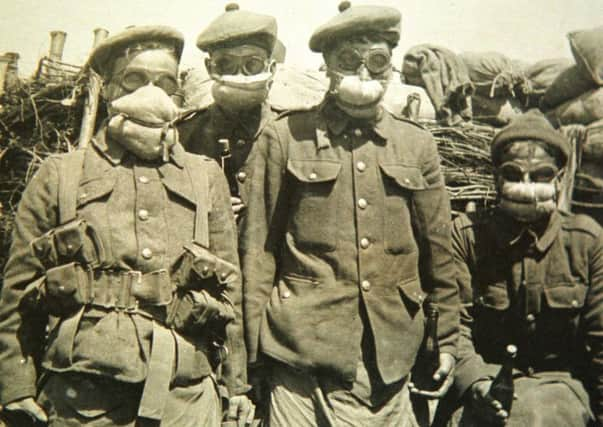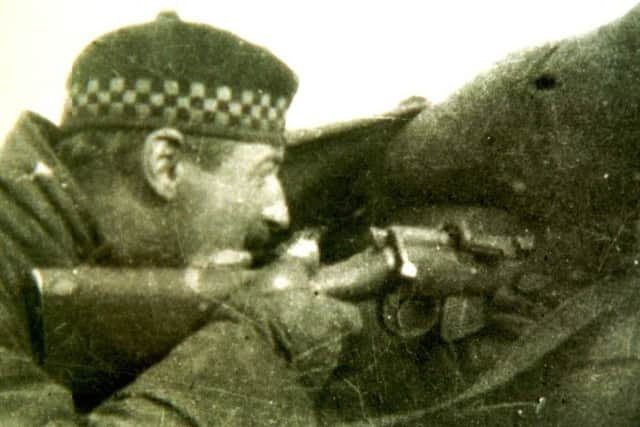Finding Lawrence - one man among many '˜disappeared'


What happened to Private Lawrence Heenan, son of Laurence, a coal miner from Ireland, and his wife Margaret?
The short answer is that like tens of thousands of other victims of the Great War he died in action on the Western Front, but - at a time when the details of local casualties were copiously written up in local press - what actually happened to him?
Advertisement
Hide AdAdvertisement
Hide AdThe family lived in Denny where he, his dad and two brothers all worked as coal miners - his sister Ann worked in the paper mill.


Two months after the outbreak of war he enlisted with one of the Argylls’ battalions (they were happy to accept him even although he was below the preferred height at just 5ft 2ins) and spent the next few months at training camps down south,
In December 1914 (perhaps Christmas or Hogmanay?) he blotted his copy book by being found drunk in his billet, and was fined seven days’ pay - but this wasn’t really a serious issue, apart from the lost pay.
Then in May 1915 his battalion, the 10th, was sent to join the British Expeditionary Force in France.
Advertisement
Hide AdAdvertisement
Hide AdSoon he was on the front line in Belgium, and made his will - leaving everything to his dad “of 17 Herbertshire Street, Denny”. Then Private Heenan’s war - and his life - ended abruptly when he was killed in action on October 15.


Karen (pictured) said: “There were no reports of attacks or casualties involving the 10th (Service) Battalion on the 15th.
“In fact the men had been pulled back from the front two days earlier and were now in camp well away from the action.
“So we have a mystery. Why was October 15 given as the date of Lawrence Heenan’s death? One possibility is that he was injured in an earlier attack and died some time later as a result of his wounds. But there is no trace of his admission to a field hospital”.
Advertisement
Hide AdAdvertisement
Hide AdNotice of his death duly appeared in the Falkirk Herald, but with no further details.
Karen said: “One clue comes from a list of soldiers killed during the war that was published by the War Office in 1929.
“It identifies 30 men, including Lawrence Heenan, all from the 10th (Service) Battalion, who died on October 15.
“The answer lies in the daily War Diary kept by the Battalion commander:
Advertisement
Hide AdAdvertisement
Hide Ad‘At 6am the enemy exploded a large mine under old CRATER in trench 29. This did a great deal of damage in front and at the BLUFF and was most regrettable in that we lost about 70 men, 14 of whom were killed and 16 missing.
‘All dug outs nearby were completely blown in causing many men to be buried. The men though for the most part new to trench warfare stood absolutely firm under these most trying circumstances’
Then Karen found definitive proof in a letter to Lawrence’s sister Ann from another soldier in the battalion.
It reads: ‘It is with the greatest of regret that I have to inform you that Larry was killed on Friday morning, in the trenches.
Advertisement
Hide AdAdvertisement
Hide Ad‘It was very hard on him after coming through five days’ hard fighting in the big advance.
‘We were only out for three days after the fighting when we were packed off to the trenches in Belgium and it was there, in the trenches that Laurence met his death.
‘We were blown into the air by a German mine, burying half our company.
‘I may say in closing Larry was a big favourite out here. We miss his presence greatly’.
Advertisement
Hide AdAdvertisement
Hide AdGiven that Lawrence - Larry - was a miner, his death at the hands of enemy miners (who had clearly laid a colossal bomb under his trench) was arguably a cruel irony.
The Scotsman account notes that Lawrence worked in Woodyet Pit, Denny, and that his dad had “five sons in the army”.
His death is commemorated at the Menin Gate memorial in the Belgian town of Ypres - along with that of so many other Scots - and he was posthumously awarded both the Victory Medal and the British War Medal.
Meanwhile a war gratuity of three pounds five shillings and tenpence was paid to his father in 1916, and a year after the end of the war his brother James was paid £3.
Advertisement
Hide AdAdvertisement
Hide AdThe famous poem promises: “We shall remember them”, but we do not have a photograph of Private Heenan, and without Karen’s incisive research his story would have been just another “anonymous” casualty, his brief life forgotten.
Thanks to Karen’s research, we can perhaps begin to understand what his death would have meant to his family, his community (a close pit community) and his church -St Alexander’s RC Church in Denny. We don’t know his four brothers fared, or how the family coped.
Of course the Heenans were not alone in their misery. Millions paid the incalculable price of “the war to end all wars”.